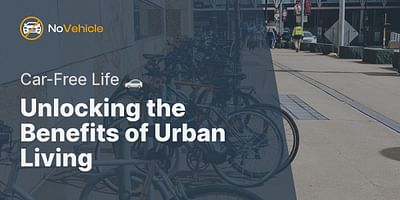Jonathan Glover is an enthusiastic travel blogger and explorer who has embraced a life free of motorized vehicles for numerous years. He finds joy in unveiling new places and devising innovative modes of transportation, ranging from hitchhiking to aquatic adventures in a kayak.
Living without a car in either a rural or urban area can be a rewarding and fulfilling experience. However, there are some key differences to consider when deciding which environment is best suited for a car-free lifestyle.
Living car-free in a rural area offers a unique set of advantages. The pace of life is often slower, and you can enjoy the tranquility of nature without the noise and pollution of cars. Rural areas typically have more space and open land, making it easier to engage in outdoor activities such as hiking, biking, and camping. Additionally, living in a rural area without a car can be more affordable, as housing and living costs tend to be lower compared to urban areas.
However, it's important to note that rural areas often have limited public transportation options. Depending on your location, you may need to rely on infrequent bus services or even hitchhiking to get around. This can require more planning and flexibility in your daily routine. It's also worth considering that access to amenities such as grocery stores, healthcare facilities, and entertainment venues may be more limited in rural areas, requiring you to travel longer distances to meet your needs.
On the other hand, living car-free in an urban area offers a multitude of benefits. Cities are typically well-connected with extensive public transportation networks, including buses, trains, trams, and subways. This makes it easier to navigate the city and reach your desired destinations efficiently. Urban areas also tend to have a wider range of amenities and services within walking or biking distance, including grocery stores, restaurants, parks, and cultural attractions.
In addition to the convenience of public transportation, urban areas often have a vibrant and diverse community. You'll have the opportunity to meet people from different backgrounds and engage in a variety of cultural activities. Living car-free in the city can also be more environmentally friendly, as you'll be reducing your carbon footprint by not owning a car.
However, it's important to consider the higher cost of living in urban areas. Housing prices, transportation costs, and general expenses tend to be higher compared to rural areas. Additionally, the hustle and bustle of city life may not be everyone's cup of tea. If you prefer a quieter and more laid-back lifestyle, a rural area may be a better fit for you.
Ultimately, the decision to live car-free in a rural or urban area depends on your personal preferences and lifestyle. Both options have their own advantages and challenges. Consider factors such as access to amenities, transportation options, cost of living, and your desired lifestyle when making your decision. No matter which environment you choose, embracing a car-free lifestyle can lead to a more sustainable, adventurous, and fulfilling way of living.















